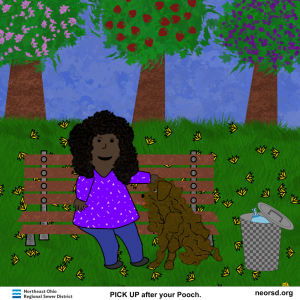Many people around the world are experiencing vision problems. According to the World Health Organization, at least 2.2 billion people globally have near or distant vision impairment. In the United States alone, over seven million people experienced vision loss or blindness in 2017, according to the Centers for Disease Control and Prevention.
Children are no exception. Data from the 2022 American Community Survey shows that an estimated 600,000 children in the US experience vision difficulties. This prompts the need for early interventions to avoid the further development of ocular problems among children. As vision issues grow among kids, we look at what parents and educators can do to protect their eyesight.

Kids And Vision Issues
A study published by the National Institutes of Health mentioned that the number of children experiencing blindness is estimated to be 1.4 million worldwide, with 19 million kids categorized as visually impaired. The same study found that vision impairment hampers the academic performance of schoolchildren, particularly affecting their reading and literacy skills. Children with visual impairment lag behind their peers with normal eyesight in terms of reading speed, and as workloads at school increase, it may be more difficult for children with visual impairment to keep up if they have a hard time studying. This underscores the need for vision correction and even interventions to help kids preserve their ocular health. Here are some things that parents and educators can do:
What Parents And Teachers Can Do
Monitor And Reduce Blue Light Exposure
In a tech-driven society, children are easily becoming digital natives. Schoolchildren are now relying on electronic devices for learning, especially during online classes. However, gadgets emit blue light that can cause eye strain, dry eyes, cataracts, and age-related macular degeneration in the long run. Overexposure to blue light also disrupts sleeping patterns because it conditions the brain into thinking it’s still daytime, thus making it harder for children to fall asleep. Parents can reduce their children’s exposure to blue light by regulating gadget use or reminding them to take frequent screen breaks while studying to avoid eye problems in the future.
Encourage The Use Of Vision Correction Tools
You can also encourage children to know the importance of eye care. LensCrafters can help kids have a fun and interactive learning experience with Eye Odyssey. This immersive platform takes children on an adventure with a character named Blinky as they overcome the challenges caused by excessive screen use and maintain healthy vision. LensCrafters is also a retailer that offers a variety of options for kids’ glasses, including the Ray-Ban RB1586 Optics Kids and Sferoflex SF2857, both made of durable frames that are perfect for playful children. Having a one-stop shop for kids’ eyewear where children can also learn is a great way to provide vision correction and lessons on the importance of taking care of their vision.
Integrate Lessons About Eye Care
Teachers can also incorporate lessons about the proper maintenance of ocular health, and it doesn’t have to be complicated. For example, you can teach young children the benefits of eating eye-healthy foods such as carrots, dark green vegetables, and sweet potatoes, which are all rich in vitamin A, which could prevent long-term eye diseases and help them adjust their vision in the dark. You can use visual aids or interactive storytelling techniques to make your lessons about eye care more engaging for young learners.
Emphasize The Importance Of Eye Exams
Although most states require schools to do a vision screening for students, this may not be enough to detect serious eye problems. The American Optometric Association says that school screenings fail to detect 75% of kids with ocular issues. In that case, teachers can remind parents to prioritize their kids’ eye exams so that an expert can catch early symptoms of potential vision problems that can be slowed and cured. Parents can schedule an eye exam through retailer websites like Target Optical if they want to find a nearby eye doctor. That way, kids can avoid eye complications through early treatment and enjoy learning.
As vision issues remain a burden among many children, eye care is more crucial than ever. Teachers and parents should step up by monitoring screen use, teaching lessons on eye care, and prioritizing vision correction and eye exams to help children preserve their eye health.























